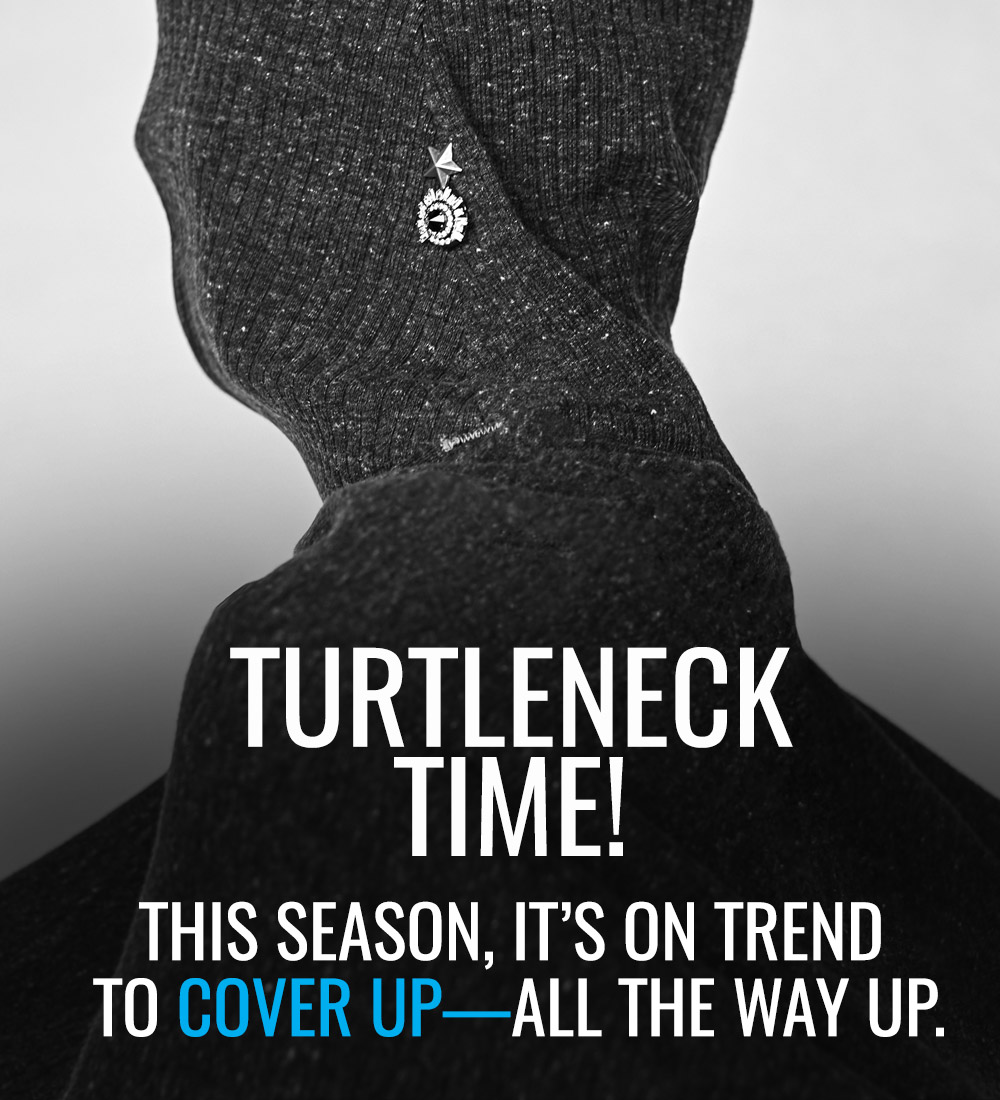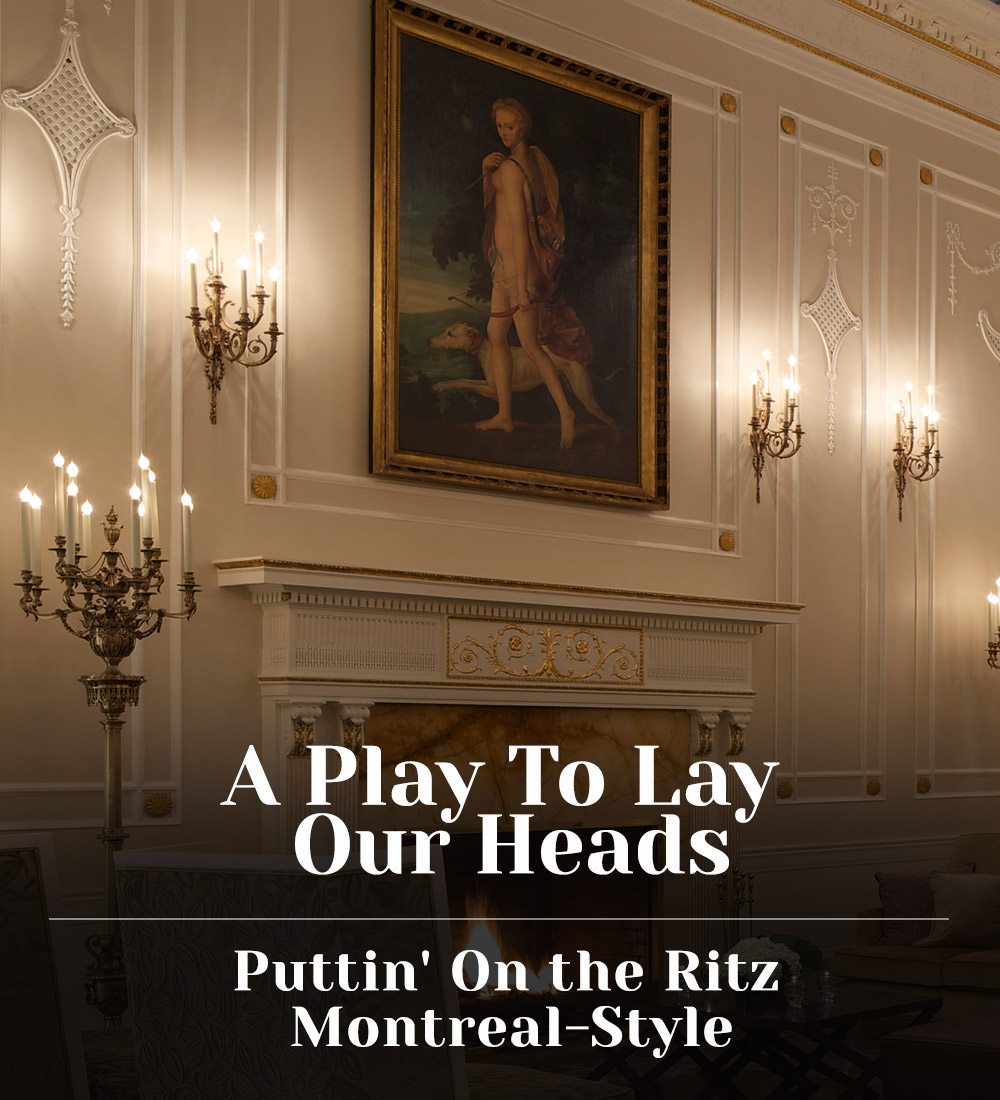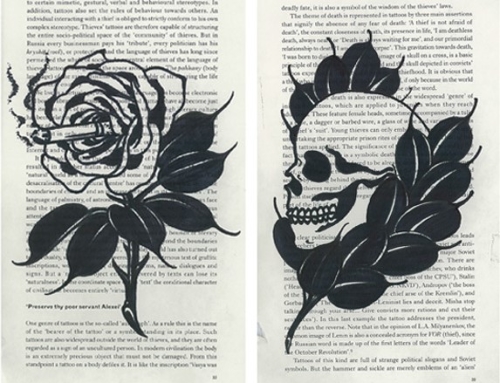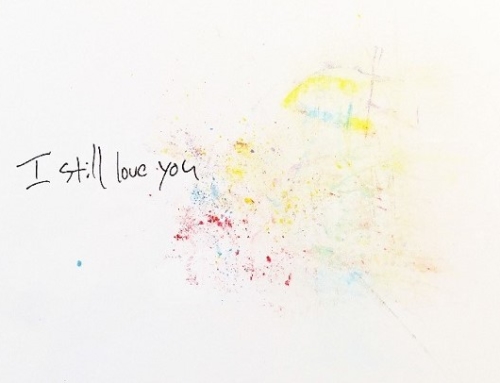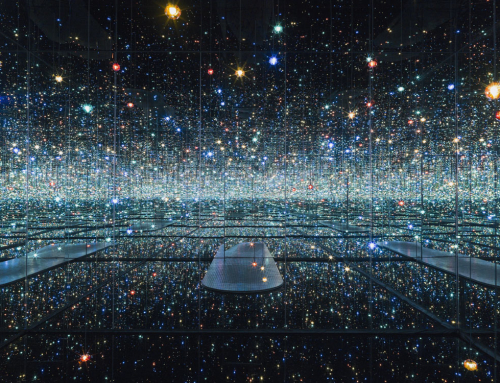Artist Elvira ‘t Hart’s work started out clearly as art, but then a transformation occurred, and what once lived solely on paper evolved into wearable pieces.
“I believe that fashion can be art,” declares the artist-turned-designer during our interview.
It’s hard to disagree with ‘t Hart after witnessing how she takes a scribbled line drawing and creates an astonishing leather jacket with a depth of artistry that leaves one awe-struck. This is not frivolous fashion, this is remarkably wearable art.
Refusing to label her works under both the categories of fashion and art, ‘t Hart’s 2D sketches, which see transformation into 3D wearable replicas via technology, are better filed according to their mergence of fashion, art and technology — an emerging genre ‘t Hart shares with fashiontech designer Anouk Wipprchet, known for her unique physical relationship with her couture Bladerunner-esque garments.
The two maverick artists/designers are the next generation of artists in their field, one shaped by industry giants highlighted in The Museum at FIT’s ongoing exhibit Fashion and Technology, which examines how the development of technology has impacted the fashion design industry. The exhibit showcases the work of icons and innovators including Elsa Schiaparelli, Issey Miyake and Nicolas Ghesquière for Balenciaga. Those in New York who have yet to visit the museum best hurray, the exhibit ends today.
Should a visit to the exhibit not be in the cards, fans of the fashiontech movement can see more creations in that vein, this time designed by ‘t Hart herself, in Paris at July’s Who’s Next Trade Show — a gathering of fresh international designers from varying backgrounds, reputed for its trendsspotting. There’s also London’s Fashion Space Gallery’s technologically-minded exhibit entitled, Layer by Layer, on display till May 18th. The exhibit focuses on 3D printing and its innovative application in today’s fashion industry.
Judging from these gallery ongoings, it would seem the buzz of technological advancements in fashion design is in the air. Below, we talk to ‘t Hart about her views on fashion as an art form, and discusses how technology has played a role in her collection.

Let’s get right down to the crux of the matter: where do you stand in the controversial debate of fashion being a form of art?
Fashion can be a form of art. It’s probably more applied art, it has a function: dressing the body — hopefully in a nice way. However if you create something highly decorative and unpractical which can be “worn” on the body, it can be — in my opinion — art. [In this case,] you can argue whether it is fashion or not.
So all fashion then is a form of art in some way?
If you are just shifting pockets and seams around, you are not creating art in my opinion. If you are not only reinventing the color and shape of garments, but reinventing the way garments are created or transforming the way garments look I think you become closer to a designer and being an applied-artist. Still, for it to be fashion, you need to include the body as well, and it needs to fulfill its wearable function.
Your own garments fulfill that function. Do they then belong in the art world, fashion industry, or both?
I don’t categorize my work. If my drawings would be art and I apply them directly so they can be worn like clothes, why not [be] both [art and fashion]?
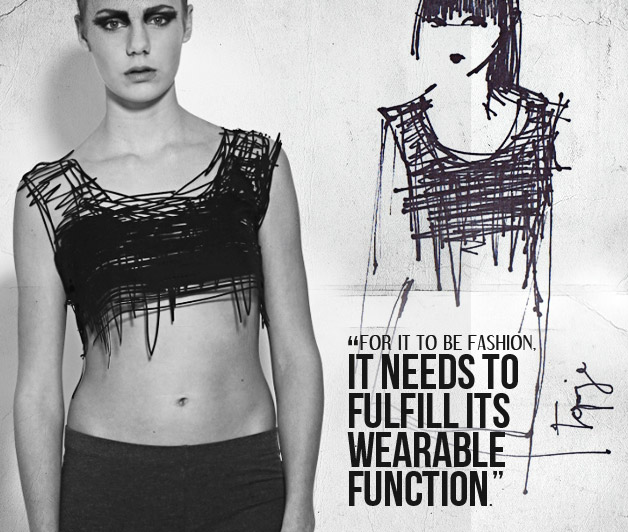
Takes us into your creative process. Have you discovered any limitations when transforming your 2D drawing into 3D garments?
A drawing has of course two dimensions, a body is three dimensional. So you can make a drawing like drawings are normally made: from one point of view. But for this to become a garment, you have to do this for at least two point of view, the front and back. You have to make sure these connect or you have to make a drawing that wraps around. Still you have the shape of the body. You can’t just make a drawing, already when drawing you have to take the shape on the body in account, so it will fit nicely later. A normal constructed garment also needs darts and a certain cut to fit nicely.
Sounds as if you’re limited by the physical body itself.
The limitation here is I can’t make a three dimensional drawing. It would be great if I could walk around a body and just draw. Another limitation because I can’t draw it directly on a body, is that it has to fit on a body, just making a drawing will not do, and you have to take in account that once a drawing comes loose from paper, it also has to endure gravity. Loose ends will hang down. Not a big problem, but that is why I connect drawings that exist of only a few lines on a fabric background.
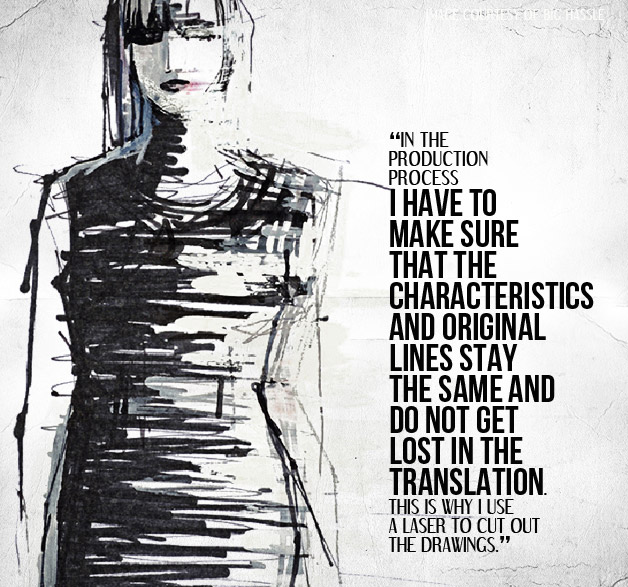
Your sketches read as almost unfinished in some regards, but beautifully so. It’s impressive how you can take this “raw” inspiration and transform it into a finished garment. How do you do it?
An image is reduced to lines and planes of black and white. Only essential information is given. However, the viewer makes this image complete. This idea of leaving something to the imagination [is something] I find intriguing. Quick unfinished sketches are often more interesting to look at, as it leaves some work left for the imagination. In the production process I have to make sure that the characteristics and original lines stay the same and do not get lost in the translation. This is why I use a laser to cut out the drawings. It cuts out precisely what I have drawn, this way my “hand” and all the characteristics of the drawing also appear in the final garment.
Your Drawn Leather Jacket from your ’13 collection was a change in material. You ask, “If this works on paper, can I make it work in real-life?” How else are you planning to push boundaries?
I am still trying to push this one! We’ll see when I get there…
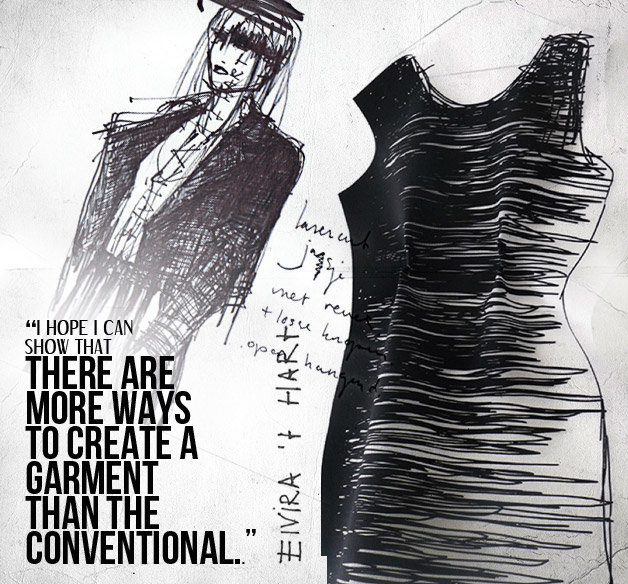
We can’t wait to see what you find once you do get there! How do you think technology, like your method of 2d to 3d, is changing fashion?
I don’t think this will change the future [of fashion] because with the conventional way you are already creating a 3D piece out of 2D fabric, but I hope I can show that there are more ways to create a garment than the conventional. That garment can have the same function and can look roughly the same, but still is completely different.
It seems like your leading the charge for innovation.
I do hope there is a change in fashion — a new generation of designers that know how to use new techniques in their advantage and try to make the impossible possible! Using new technologies as a tool to get there.
From what you see going on in the industry now, do you foresee any negative consequences of technology on the future of fashion?
Other than using technology for the sake of technology… I can’t imagine.
Published May 8, 2013




